Open any Maine travel brochure and count iconic images: Lighthouses, lobster, blueberries, moose. And now tattoos? Maine’s next era of branding might be literal — body art — and it reflects the popularity of tattoos throughout the nation. With waiting lists of up to six months and clients of all ages traveling long distances to work with renowned Maine artists, Maine’s tattoo culture is among the most vibrant in New England.
Tattoo practice spans centuries and cultures, but the art of Maine ink dates to at least 1925 with Peter D. Jongeleen’s “Electrical Tattooing” shop at 320 Fore St. in Portland. Once primarily associated with American sailors and outlaws, tattoos were largely popularized in the United States when tattoo legends such as Norman “Sailor Jerry” Collins began inking World War II-era servicemen. Many iconic nautical-themed images (think anchors and sailboats) can be traced directly to his Honolulu studio.
Now, with 196 tattoo licenses issued in Maine so far in 2013 — already matching the total for all of 2012 — the industry is undeniably mainstream. Visible body art is encouraged at many local venues and lauded as an extension of personal expression. Instead of apprehension, tattoos are apt to inspire conversations like “Who did your work?”
In Maine, there are as many approaches to the practice as there are designs. Even the language is complex.
Phuc Tran of Portland’s Tsunami Tattoo earned degrees from Bard College and the University of Massachusetts, but he eschews the “artist” title and refers to himself as a “tattooist,” or a “tattooer.” “The phrase ‘tattoo artist’ is kind of redundant. It’s probably a holdover from when tattooers wanted some legitimacy. I prefer tattooist. That’s what I do — I tattoo.”
However, “Many tattooers also think that the term ‘tattoo parlor’ is antiquated and harkens back to the olden days of tattooing,” he said. “I know that I would cringe at ‘parlor.’ “
Like Tran, Chris Dingwell of Chris Dingwell Studio in Portland earned academic degrees, but he considers himself an artist, not a craftsperson. Rather than a wall of stock designs, or “flash,” both men maintain detailed and professional portfolios for clients to review.
“We’re breaking away from the biker aesthetic. Back in the 1970s, that rigid perception was accurate, but now it’s reversed,” Dingwell said. “We’re college-educated folks with an art background. You are commissioning an artist.”
‘TATTOO PRACTITIONERS’
The Maine Department of Health and Human Services — specifically, the Maine Center for Disease Control and Prevention’s Division of Environmental Health — oversees the licensing process, and health inspector Joel Demers settled the semantic debate.
In the official regulations, Tran and Dingwell are both considered “tattoo practitioners,” and the legally preferred term is “establishment,” not parlor.
There are no apprenticeship or education requirements for obtaining a tattoo license in Maine.
“Our program, and therefore our regulations, is focused on disease prevention,” said Demers. “Many people think that the quality of the work, the ‘artwork,’ is part of that licensing process. It’s not.”
Education and apprenticeship rules vary by state, but the response among Maine tattoo practitioners is generally positive. While some would prefer a level of formal training, many are comfortable with Maine’s common-sense approach.
“The regulations are rigorous without being onerous,” said Tran.
The camaraderie within the profession is evident in Portland, Tran said. When he moved from New York to Portland, he noticed the difference immediately.
“New York is incredibly cutthroat and turf-driven, and other shops are seen as competition,” he said. “Portland’s tattoo community is much more friendly.”
Also surprising? The percentage of women in the industry.
Danielle Madore is one of three women who practice at Portland’s Sanctuary Tattoo. Together with Carrie-Anne Vinette and Jennifer Moore, they are among the 25 percent of Maine’s female tattoo practitioners.
Women also represent about half of their clientele, and this feminine energy is one aspect that makes Madore’s approach distinct. “It is important for me to make a personal connection with my clients,” she said.
One of those clients, Anna Melbin, supports this vision.
“Tattooing has evolved for me in meaning. It is an artistic way of expressing who I am and what is important to me — what I love, care about and nurture,” she said. “Danielle’s art translates a piece of who I am into a tangible expression. It’s not unlike personal fashion or dyeing one’s hair. The difference is permanency, which makes this medium of expression take considerable thought and, again, bravery.”
Robin Harmon, another client, reinforces this significance.
“I had done quite a bit of research online and knew that I wanted someone at Sanctuary to do my tattoo. The artists there are amazing,” Harmon said. “Danielle was the first one I spoke to when I visited the studio, and she was so genuine in her response that I knew she would be the one.
“Danielle’s work — lupine, bleeding hearts, hummingbird and dragonfly — is probably my most significant tattoo, and most meaningful. It represents my grandparents and my husband. I lost both my grandparents to cancer, and my husband is currently recovering from cancer. The lupine is for my grandfather, who collected seeds and scattered them on the hillside of the family farm in Vermont; the bleeding heart and hummingbird are for my grandmother, who loved them so; and the dragonfly is for my husband, who is amazed by them every spring. For me, each tattoo is a well-thought-out design and an expression of who I am. I know this will not be my last one.”
Tom Murphy of Tom’s Terrific Tattoos in Ellsworth — an establishment that reflects the grittier, more traditional approach to tattooing — agreed that tattoos have become much more popular with the female demographic.
“It used to be that an occasional woman would walk into my shop and want a rose on her chest. Now a lot of my clients are women, and it’s mostly custom work,” he said. “I had an 86-year-old woman come in for a tattoo.”
Whereas Tran’s work at Tsunami is largely Asian-inspired and his waiting list is six months, Murphy has an impressive wall of iconic flash, and his business is economy-driven. “My clients are more blue-collar, working in fishing or landscaping. With fuel prices so high, tattoos are a luxury item for these guys,” he said.
COVER-UPS COMMON
The growing popularity of tattooing in Maine also has its downside. “Now anybody can buy a tattoo kit,” Murphy said.
And he’s right. Brand-new basic tattoo supplies can easily be purchased for $50 with free shipping; less if ordering a used version.
“The worst is when teenagers start tattooing themselves and their friends,” said Demers at the Department of Health. “We tend to hear about these situations from licensed establishments doing the cover-up work.”
Speaking of onerous, when asked if there was any tattooing Tran refused to do, he was quick. “No necks or hands unless they already have full sleeves. Neck and hands are job-stoppers.”
Said Madore, “Anything hateful. I want the work to look good. If I feel like I can’t be proud of it, I don’t want to do it.”
As far as basic tattoo etiquette goes, there are some guidelines.
“This is a personal investment,” said Dingwell. “Make an appointment. Be patient, wait, think it through, and take the artist’s advice seriously.”
And if you don’t? “I do an enormous amount of cover-up work,” he added.
Being nice tops the etiquette list, and discount shopping is at the bottom. The cost of tattooing might seem steep, but consider that body art is a lifetime investment.
While one practitioner might charge less per hour, it could take several hours to complete the project. Another practitioner might be more expensive, but work faster.
No longer relegated solely to marking motorcycle gangs or sailors, Maine’s dedicated cadre of artists and craftspeople are now successfully eking a place for body art within Maine’s larger creative economy.
But what about the pain?
“Don’t complain,” said Madore. “It’s a metaphor for life. There’s pain — sometimes a lot of it — but it’s all about what you bring to the experience.”
Shonna Milliken Humphrey is a freelance writer and a dining reviewer for the Maine Sunday Telegram.
Send questions/comments to the editors.

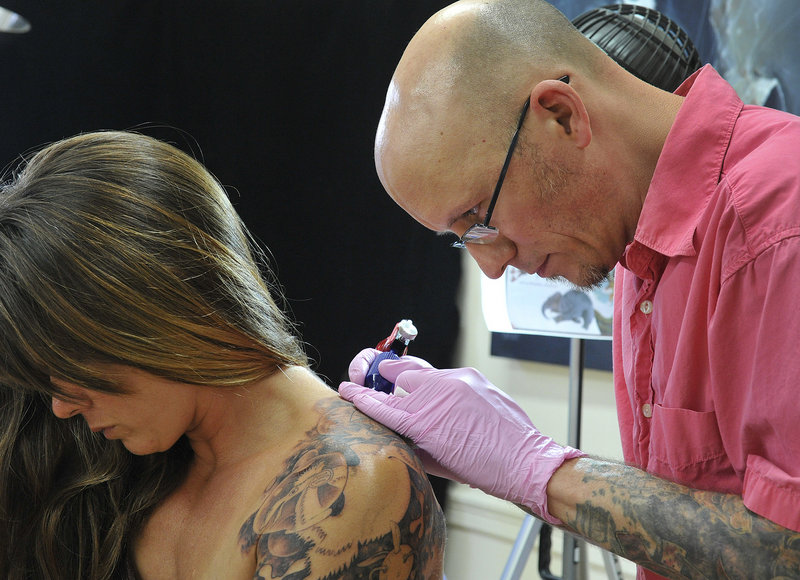
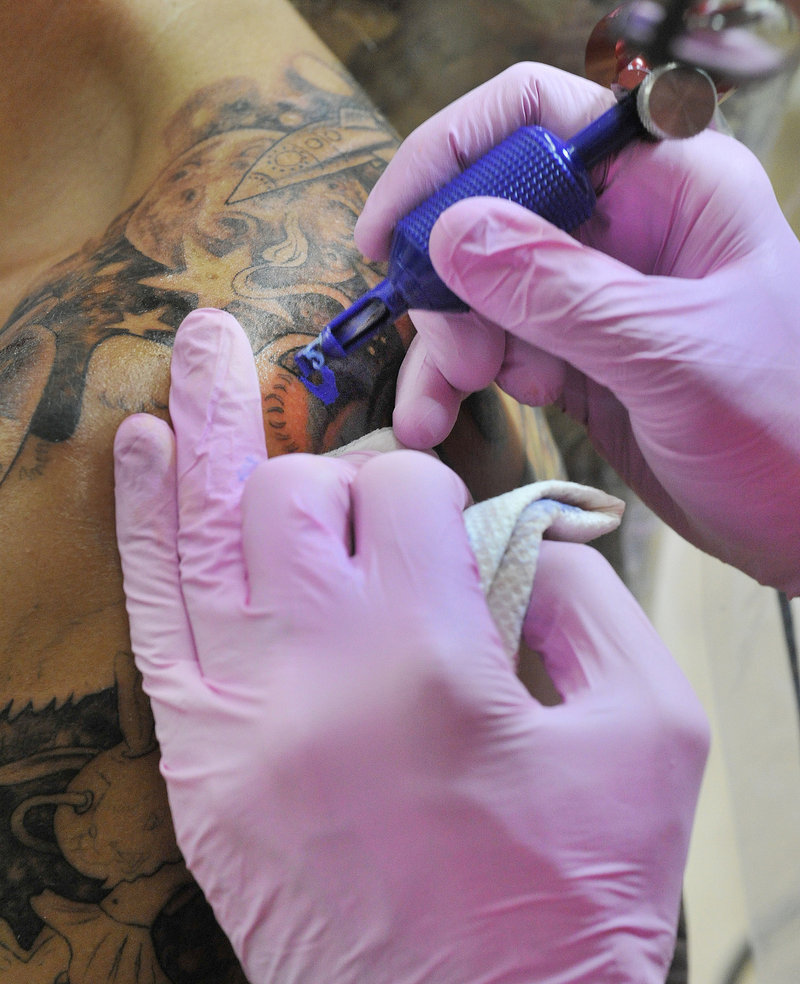
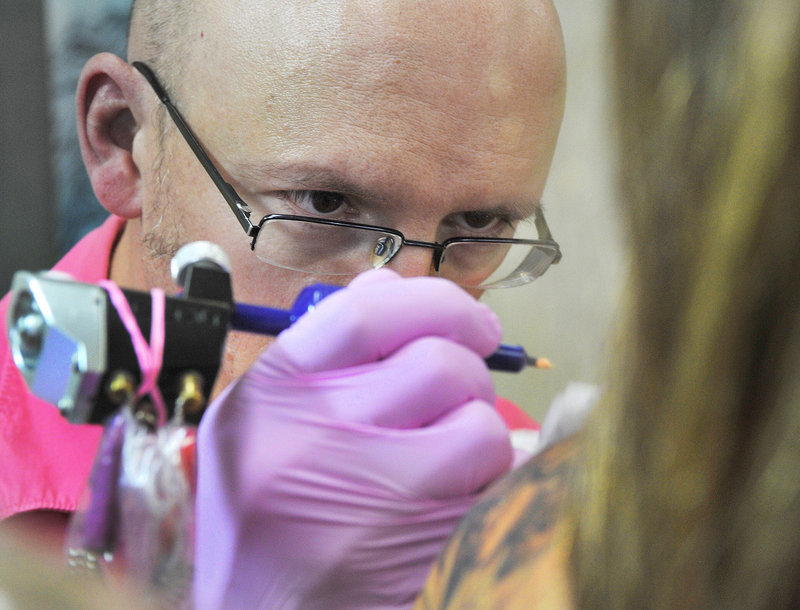
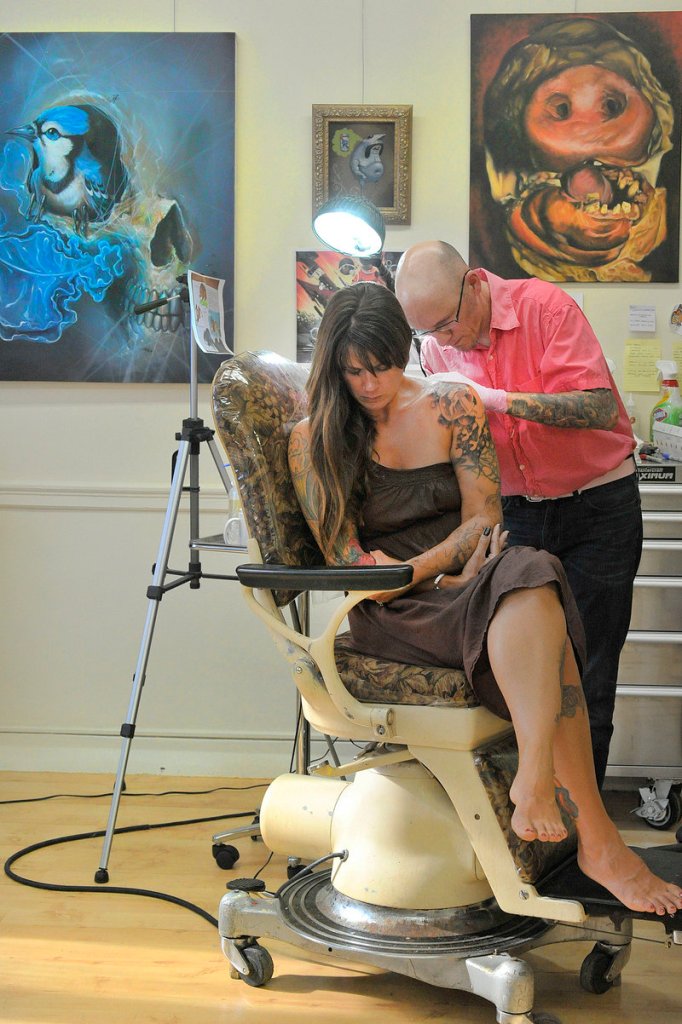
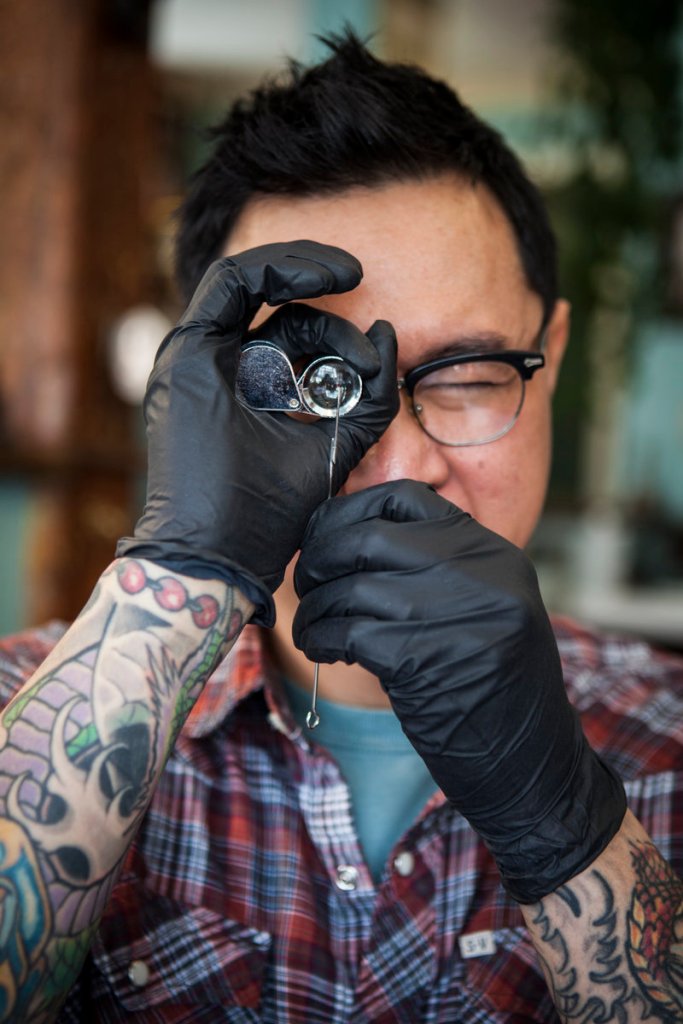
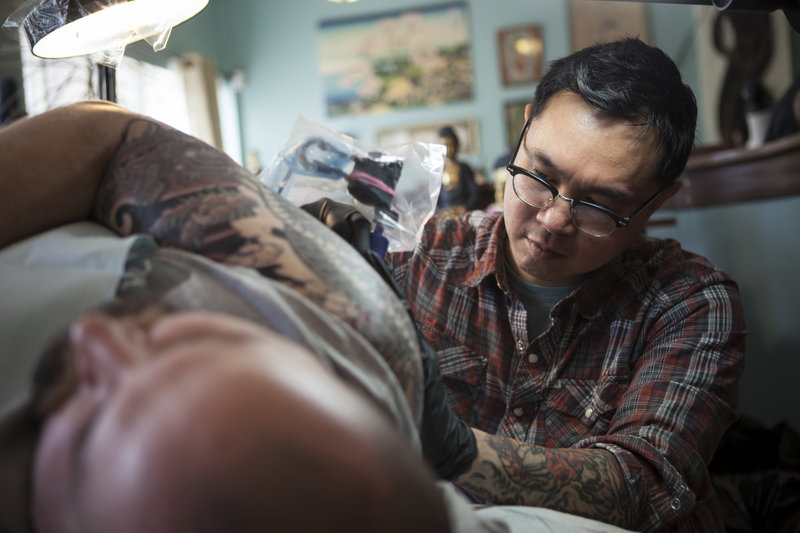
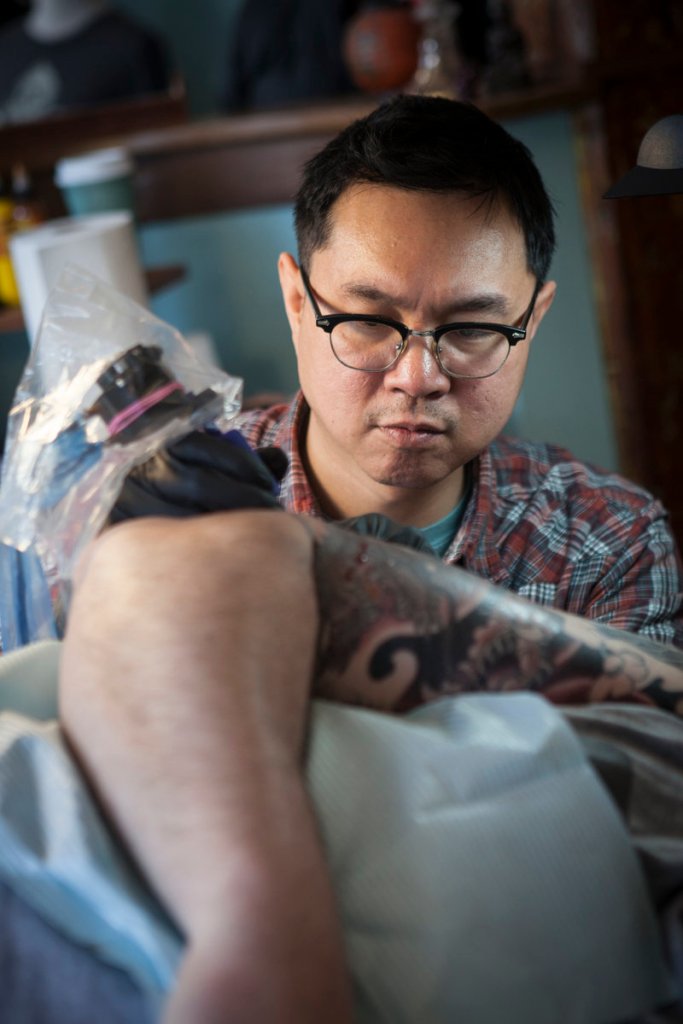

Success. Please wait for the page to reload. If the page does not reload within 5 seconds, please refresh the page.
Enter your email and password to access comments.
Hi, to comment on stories you must . This profile is in addition to your subscription and website login.
Already have a commenting profile? .
Invalid username/password.
Please check your email to confirm and complete your registration.
Only subscribers are eligible to post comments. Please subscribe or login first for digital access. Here’s why.
Use the form below to reset your password. When you've submitted your account email, we will send an email with a reset code.